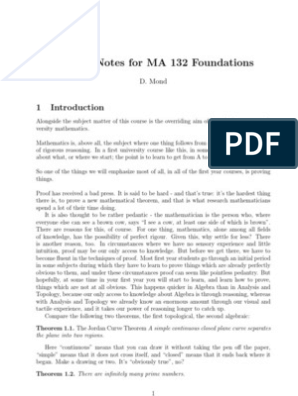0% found this document useful (0 votes)
1K views9 pagesChapter 1: Real Number System Learning Outcomes
The document provides an overview of the real number system including:
- Classifying real numbers as natural numbers, integers, rational numbers, and irrational numbers.
- Defining rational and irrational numbers.
- Illustrating the relationship between real, rational, and irrational numbers on the real number line.
- Explaining operations and properties of real numbers such as addition, multiplication, and indices.
- Introducing concepts like intervals, absolute value, surds, and rationalizing surds.
Uploaded by
Labibz HasanCopyright
© © All Rights Reserved
We take content rights seriously. If you suspect this is your content, claim it here.
Available Formats
Download as DOC, PDF, TXT or read online on Scribd
0% found this document useful (0 votes)
1K views9 pagesChapter 1: Real Number System Learning Outcomes
The document provides an overview of the real number system including:
- Classifying real numbers as natural numbers, integers, rational numbers, and irrational numbers.
- Defining rational and irrational numbers.
- Illustrating the relationship between real, rational, and irrational numbers on the real number line.
- Explaining operations and properties of real numbers such as addition, multiplication, and indices.
- Introducing concepts like intervals, absolute value, surds, and rationalizing surds.
Uploaded by
Labibz HasanCopyright
© © All Rights Reserved
We take content rights seriously. If you suspect this is your content, claim it here.
Available Formats
Download as DOC, PDF, TXT or read online on Scribd
/ 9






































































































